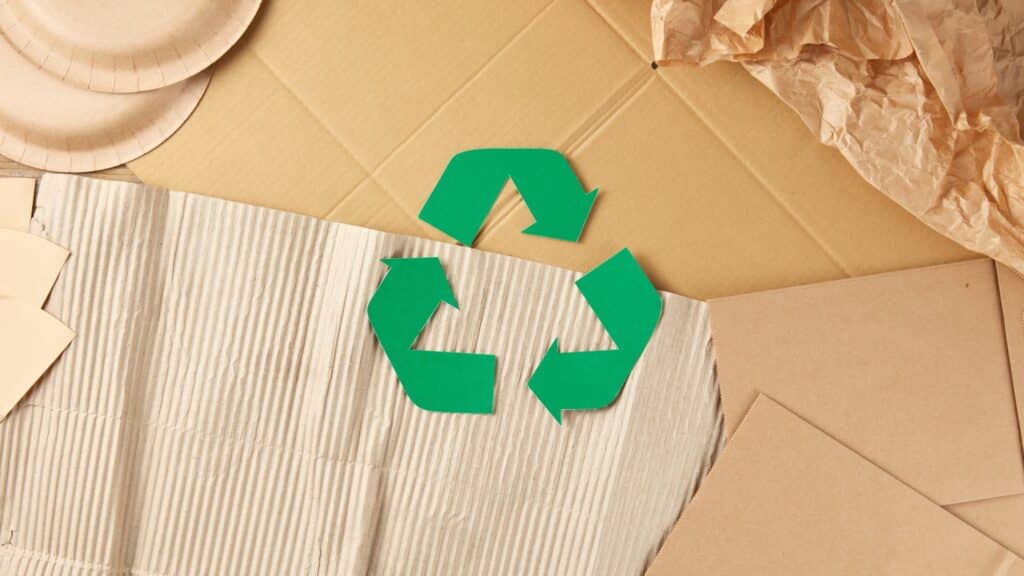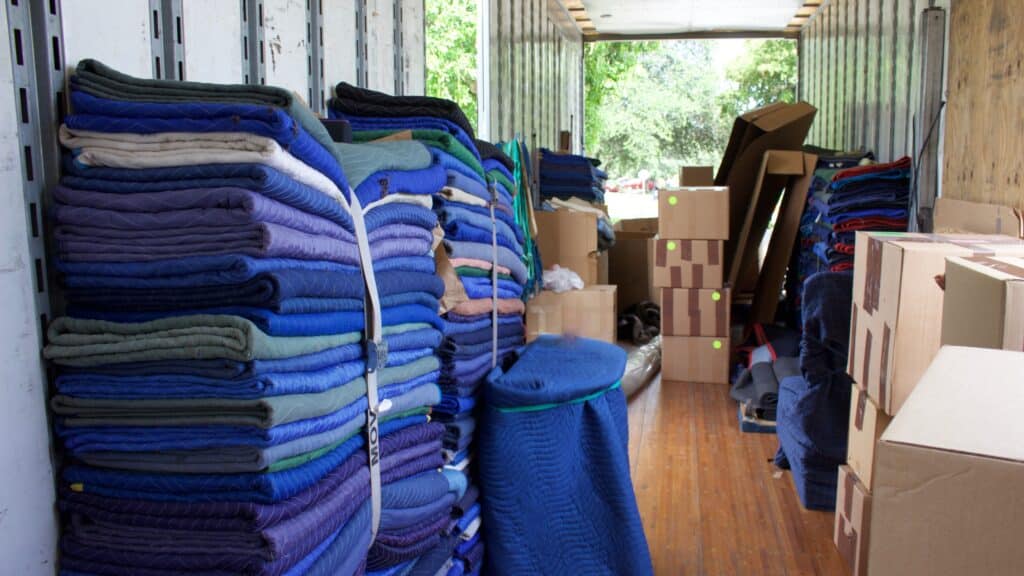
Moving creates a significant environmental footprint, from the fuel consumed by moving trucks to the mountains of discarded packing materials. The average American move generates approximately 30 pounds of waste from packing materials alone, according to the EPA. However, with some thoughtful planning, your relocation can become considerably more sustainable without sacrificing efficiency or protection for your belongings.
Choose Eco-Friendly Packing Materials

Traditional plastic bubble wrap takes 500+ years to decompose in landfills. Instead, consider biodegradable alternatives like corrugated bubble wrap, which decomposes within 1-5 years while providing similar protection.
Conventional packing peanuts contain polystyrene, which persists in the environment for centuries. Opt instead for starch-based packing peanuts, which dissolve in water and biodegrade completely within weeks. Many shipping stores now stock these eco-friendly options at competitive prices.
Cardboard boxes remain a moving staple, but their environmental impact varies dramatically based on sourcing. Choose boxes made from recycled content with the highest post-consumer waste percentage available. These boxes require 25% less energy to produce than virgin cardboard according to the American Forest & Paper Association.
Many moving companies offer reusable plastic moving crates for rent. These durable containers can be used hundreds of times, eliminating the need for single-use boxes altogether. Research from the Environmental Protection Agency indicates that reusable containers can reduce packaging waste by up to 86% compared to traditional methods.
Minimize and Recycle Properly

Before packing, declutter thoroughly to avoid moving items you no longer need. This reduces the number of packing materials required and the fuel needed for transport. For items in good condition, donate to local charities rather than discarding them. The Salvation Army and Goodwill accept furniture and household goods, giving them a second life rather than adding to landfill volume.
When unpacking, sort materials according to local recycling guidelines. Clean cardboard boxes can be recycled, but boxes contaminated with food, oil, or certain adhesives often cannot. According to Earth911, approximately 90% of all cardboard boxes in the US could be recycled, yet only about 75% actually make it to recycling facilities.
Plastic film and bubble wrap require special recycling processes not available in standard curbside programs. Many grocery stores collect these materials for proper processing. The Plastic Film Recycling organization offers a directory of drop-off locations near you.
Pack Smartly to Maximize Space

Efficient packing reduces the number of trips or the truck size needed. Whenever possible, use existing household items as packing materials. Towels, blankets, and clothing provide excellent cushioning for fragile items and eliminate the need for additional protective materials.
Pack strategically to eliminate empty spaces in boxes and in the moving truck. According to transportation efficiency research from the Massachusetts Institute of Technology, optimizing cargo space can reduce fuel consumption by up to 23% compared to poorly organized loads.
Disassemble furniture when possible to create more compact shapes for transport. This not only protects the furniture but also allows for more efficient use of truck space, reducing the fossil fuels consumed during your move.
Choose Green Cleaning Products for Move-Out

Moving typically involves thorough cleaning of both your old and new homes. Conventional cleaning products often contain volatile organic compounds (VOCs) that contribute to indoor air pollution and can persist in waterways after disposal.
Opt for EPA-certified Safer Choice cleaning products, which perform effectively while using ingredients that have been evaluated to be safer for human health and the environment. Simple solutions like vinegar, baking soda, and lemon juice can handle most cleaning tasks effectively without the environmental impact of harsher chemicals.
Microfiber cloths reduce or eliminate the need for paper towels during cleaning. According to the Natural Resources Defense Council, the average American uses 45 pounds of paper towels annually, with much of this use occurring during major cleaning events like moving.
Small Changes Add Up to Significant Impact
Even implementing just a few of these sustainable moving practices can substantially reduce your relocation’s environmental footprint. A move using biodegradable packing materials, recycled boxes, and efficient transportation can divert hundreds of pounds of waste from landfills and significantly reduce carbon emissions.
The slightly higher cost of some eco-friendly options is offset by their environmental benefits and often by their superior performance. Reusable containers, for instance, typically provide better protection for belongings than traditional cardboard boxes while eliminating waste entirely.
By making thoughtful choices during your next move, you contribute to environmental sustainability while still ensuring your belongings arrive safely at your new home. These practices demonstrate that convenience and environmental responsibility can go hand in hand during the moving process.


